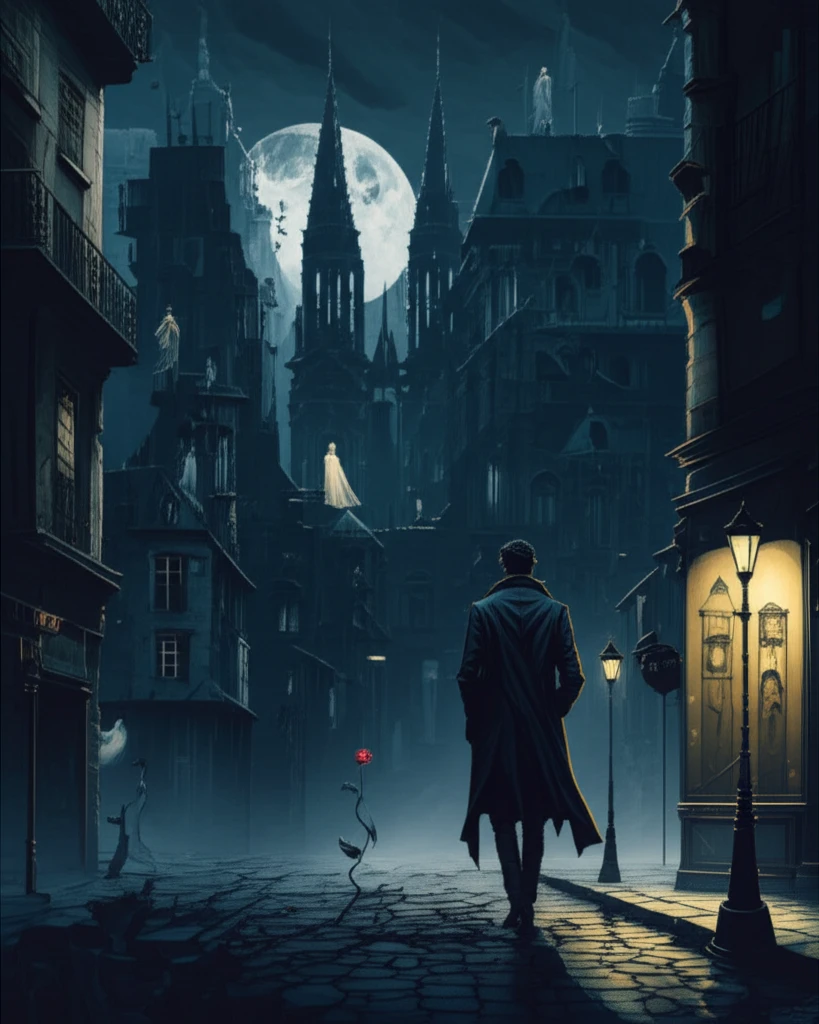
The Modern City's Dark Ballad: How Baudelaire Found Beauty in Decay
"Explore how Charles Baudelaire, defied conventional beauty standards by finding poetry and artistic inspiration in the gritty realities of modern urban life."
In the realm of poetry, Charles Baudelaire stands as a revolutionary figure who dared to challenge conventional notions of beauty. Instead of seeking inspiration in idyllic landscapes or idealized forms, Baudelaire turned his gaze towards the gritty realities of the modern metropolis. His work explores how urban decay, social alienation, and the darker aspects of human existence can be fertile ground for artistic expression.
Baudelaire's poetry delves into the heart of a rapidly changing Paris, a city grappling with industrialization, social upheaval, and moral ambiguity. As traditional beauty standards crumbled, Baudelaire sought to capture the essence of this new urban landscape, embracing its contradictions and finding beauty in its imperfections.
This article explores how Baudelaire defied the traditional norms of poetry and aesthetics. Delving into his vision of the city, focusing on his innovative techniques, like the flâneur, and his ability to transform the mundane and macabre into compelling art. Join us as we explore the world of Baudelaire, and discover his lasting impact on modern art and literature.
The Poet as Urban Explorer: Unveiling Beauty in the Grime

Baudelaire's Paris was a far cry from the romanticized visions of the past. It was a city transformed by industrialization, teeming with both progress and despair. In his collection "Les Fleurs du Mal" (The Flowers of Evil), Baudelaire confronts this urban reality head-on, finding inspiration in the unlikeliest of places.
- Embracing the Contradictions: Baudelaire's poetry thrives on paradox, juxtaposing beauty and ugliness, the sacred and the profane. This tension is evident in his vivid descriptions of urban life, where the splendor of Parisian boulevards is contrasted with the squalor of the city's underbelly.
- The "Tableaux Parisiens": This section of "Les Fleurs du Mal" offers a series of snapshots of Parisian life, capturing the city's diverse characters and fleeting moments. From beggars and prostitutes to street musicians and fashionable crowds, Baudelaire paints a portrait of a city in constant flux.
- Finding the Sublime in the Decadent: Baudelaire's poetry often explores themes of decay, death, and moral corruption. However, he doesn't merely dwell on the negative aspects of urban life. Instead, he seeks to find a strange beauty in the midst of degradation, transforming the macabre into something strangely compelling.
The Enduring Legacy of a Modern Visionary
Baudelaire's impact on modern art and literature is undeniable. His exploration of urban life, his embrace of unconventional beauty, and his willingness to confront the darker aspects of human existence paved the way for future generations of artists and writers.
By challenging traditional aesthetic norms and seeking inspiration in the realities of the modern world, Baudelaire expanded the possibilities of art and poetry. His work continues to resonate with readers today, reminding us that beauty can be found in the most unexpected places.
As we navigate the complexities of our own modern cities, Baudelaire's vision offers a valuable perspective. He encourages us to look beyond the surface, to embrace the contradictions and imperfections, and to find beauty in the midst of decay. In doing so, we can gain a deeper understanding of ourselves and the world around us.
